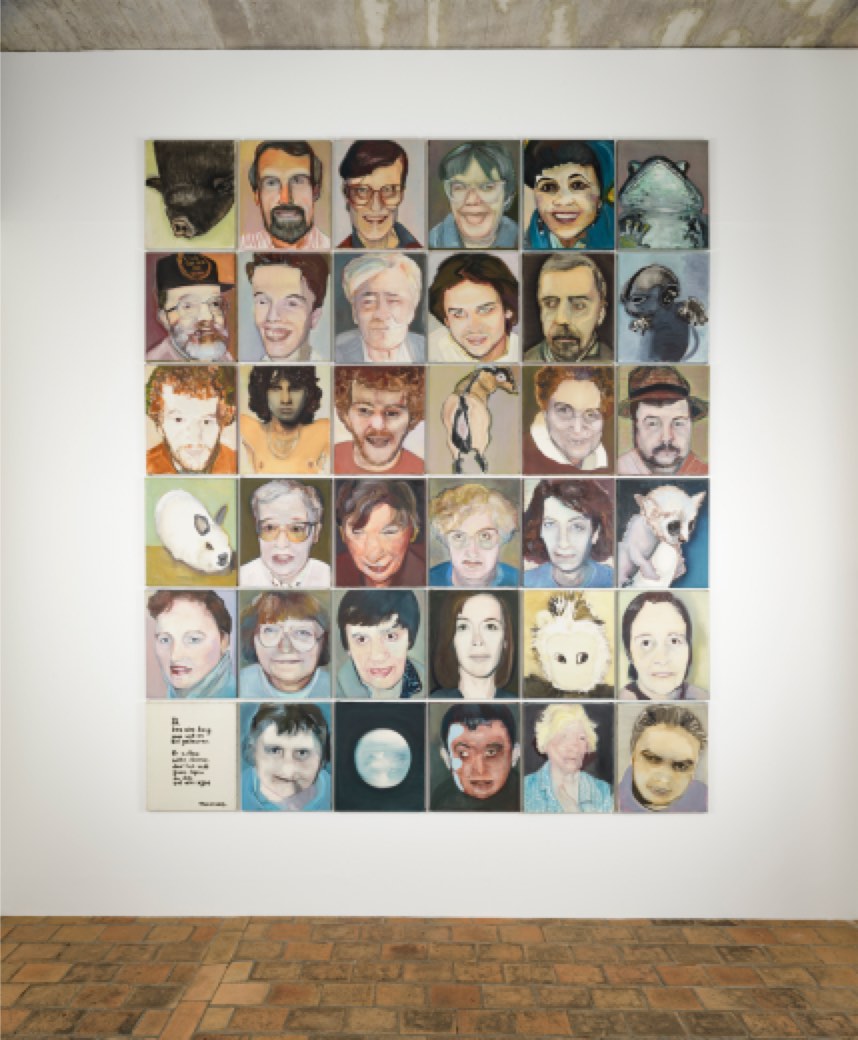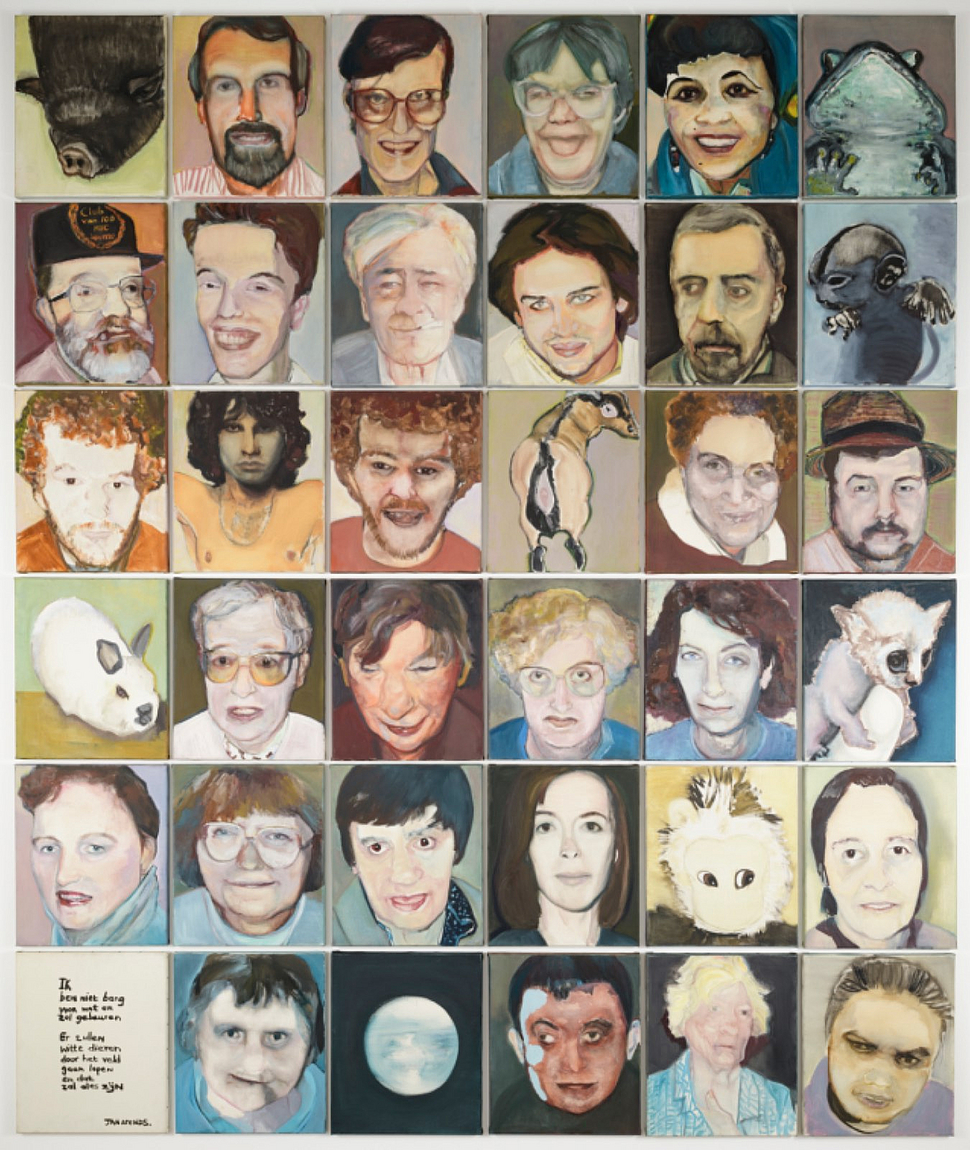Marlene Dumas
Kaapstad South-Africa , lives and works in Amsterdam
Het Hooghuys (But who I am is nobody's business)
1990-1991
oil on canvas
36 parts of 60 x 50 cm
overall 370 x 310 cm
long-term loan GGz Breburg
2017.lb.md.16
The work Black Drawings by Marlene Dumas (Capetown, 1953) has recently acquired a counterpart. Now hanging in the room across from the space containing her 111 drawings is a portrait gallery that she painted during roughly the same 1991-1992 period. The unusual history of this work, titled Maar wie ik ben gaat niemand wat aan (But who I am is nobody’s business), provides us with a unique opportunity to look at Black Drawings from a new perspective.
Along with The First People from 1990, Black Drawings was one of the first works by Marlene Dumas to be acquired by De Pont during the early 1990s. The new ensemble is a long-term loan from GGz Breburg to De Pont and museum Het Dolhuys in Haarlem. Dumas produced this as a commission for the art committee at ’t Hooghuys in Etten-Leur, which is now GGz Breburg. The work consists of thirty-six small paintings measuring 60 x 50 centimeters, which hang as a block in six rows of six. Twenty-six portraits of men and women, residents and staff of the mental-health facility, plus a bare-chested portrayal of The Doors rock star Jim Morrison, are alternated with images of several pets, stuffed toys, the moon and a poem by Jan Arends.
The story behind this work begins in 1989. Dumas, who had just given birth to a daughter, made several trips to ’t Hooghuys. She became familiar with the residents and took Polaroid photographs of them. Two, in fact, each time: one for the person and one for herself. For those who commissioned the work, the interaction between the artist and the residents of the home was, typically of that time, a key consideration. In 2005 the stories, the memories and notes made by Dumas and others involved in the project were brought together in a publication by ’t Hooghuys, titled Maar wie ik ben gaat niemand wat aan. The book can be viewed in De Pont’s library.
While painting the portraits from these Polaroids, Dumas avoided sharp contrasts of color. In terms of light, she says, the soft colors have a value that exudes calm. The portraits attest to great empathy for vulnerable fellow human beings. Together, the work suggests, these residents and staff make up a community. The distinction of who is who seems to have vanished. Can people actually be judged according to their appearance? Could the frog at the upper right be a reference to the fairy tale in which a frog, on being kissed, turns into a handsome prince? In her retrospective text on the project, Marlene Dumas writes that a great deal of ‘dangerous and nonsensical’ things are still being said by people who believe that they can ‘read’ and judge the faces of others: ‘People should not do this.’ People hide from the ruthless judgment of others, but they sometimes come out into the moonlight like nocturnal animals. Since medieval times the moon has been associated with madness and hallucinations. Just think of the word ‘lunatic’.
‘Ik/ ben niet bang / voor wat er / zal gebeuren...’ (I / am not afraid / of what / will happen...) reads the poem by Jan Arends. Throughout his life he frequently spent periods in psychiatric clinics and ultimately, in 1974, he took his own life. Portraits also remind us of our own mortality, writes Dumas in her notes, next to a photograph of the poet. ‘Perhaps art is no more than a means to help us accept death.’

